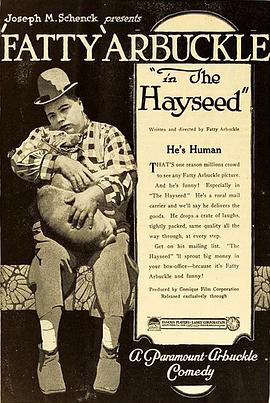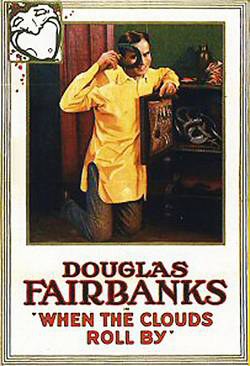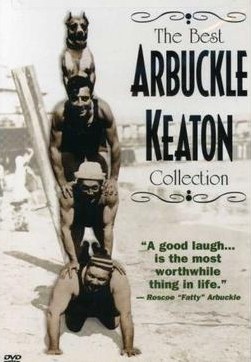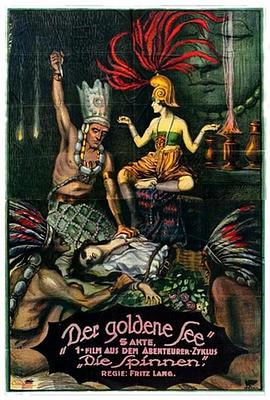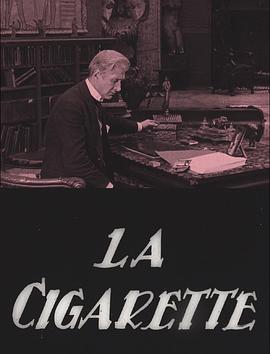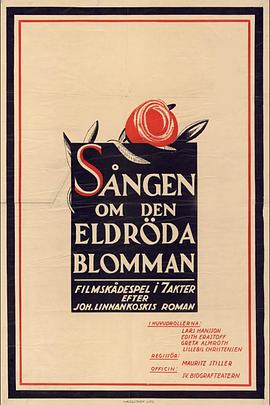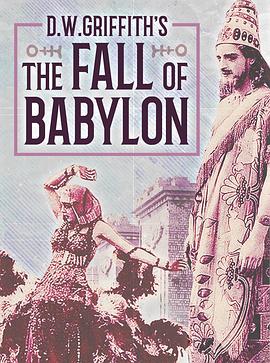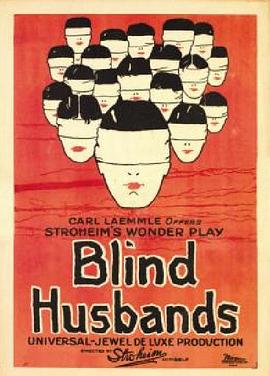-
备注:已完结
类型:喜剧片
主演:罗斯科·阿巴克尔 巴斯特·基顿 阿尔·圣约翰 莫莉·玛龙
导演:罗斯科·阿巴克尔
语言:英语
年代:未知
简介:Back Stage is a 1919 comedy, one of the last films that Buster Keaton would appear with Roscoe "Fatty" Arbuckle before they went their separate ways, Keaton would get his own studio, and Arbuckle got into feature length films. In this film, Keaton, Arbuckle, and others, work as stagehands, backstage of course, in a playhouse trying to help and in some cases, stay far away from the eccentric and diva-like performers. When the performers rebel and refuse to do the show, the stagehands, along with Arbuckle's love interest, the assistant of one of the rebelling performers, perform in their place- including Keaton showing his ability to do butterflies, no handed cartwheels, while in drag.
-
备注:已完结
类型:剧情片
导演:弗里茨·朗
语言:其它
年代:未知
简介:In San Francisco, the sportsman Kay Hoog tells to the members of a club that he has found a message in a bottle with a map from a Harvard's missing professor telling about a treasure of an Inca lost civilization still alive. He decides to go to Peru to seek the gold. However, members of the secret criminal organization The Spiders leaded by Lio Sha break in Kay's mansion during the night and steal the map. Kay Hoog travels to Peru, where he retrieves his map and a document about the Diamond Ship from The Spiders. Later he saves the Priestess of the Sun Naela and brings her to San Francisco. However, The Spiders kill Naela and Kay Hoog promises revenge for the death of his love
-
备注:已完结
类型:剧情片
主演:Greta Almroth Arvid Dahlberg 约翰·埃克曼
导演:莫里兹·斯蒂勒
语言:其它
年代:未知
简介:“Sangen Om Den Eldröda Blomman” ( “Song Of The Scarlet Flower” ) was a recent and remarkable silent surprise for this Herr Von; the oeuvre is an excellent Herr Stiller silent film that this German count watched in a newly restored and tinted copy. It combines the well-known aesthetics, technical improvements and artistic merits for which the Nordic director was known and praised since those early silent times till today. The film tells of the merry and carefree love life of young Olof ( Herr Lars Hanson ) a woodsman who during his search for true love, seduces many frauleins ( just like this German aristocrat… well, not exactly because the purpose of this Herr Von’s seduction of rich fräulein heiresses are their great fortunes… ). He will suffer disappointment and deception, all those problems that turn up in any loving relationship. Finally he will find responsibility and maturity, learning during his particular quest that his actions always have consequences in different degrees to the people around him. This Herr Von can describe “Sangen Om…” as a kind of coming of age film, the special introspective growth toward maturity of a free and easy youngster. As this German count said before, the film displays Stiller’s characteristic artistic virtues. ; in the first part of the film, we can see elements of comedy, not exactly like the comedy of intrigues in other Stiller films, but humor of a more cheerful sort, highlighting the self-involvement of our hero. Olof ‘s frivolous flirtations with the different girls eventually turn romantic and then turn into drama. There is conflict in the troubled relationship between Olof and his father and later with the father of his beloved. The beautiful and wild natural landscapes of Norrland and northern Sweden lend the tale a certain power and is characteristic of Herr Stiller’s other silents where Nature emerges as an important character in the story. This is strongly reflected throughout the film but especially during the frantic scene wherein Olof descends into the troubled waters of a river, a beautiful metaphor for the hardships that our hero has to endure until he finds himself. “Sangen Om Den Eldröda Blomman” is an excellent, beautiful film, a solid, technically perfect and intricate production of 1919 that demonstrates once again the importance of Herr Stiller for silent film history.
-
备注:已完结
类型:剧情片
主演:未知
语言:英语
年代:未知
简介:After the relatively low box office takings of 'Intolerance', D. W. Griffith would revisit his epic film three years later by releasing two of the film's interlocking stories as standalone features, with some new additional footage. The first of the two was 'The Fall of Babylon', which depicts the conflict between Prince Belshazzar of Babylon and Cyrus the Great of Persia.
-
备注:已完结
类型:剧情片
主演:萨姆·德·格拉斯 Francelia Billington 埃里克·冯
导演:埃里克·冯·施特罗海姆
语言:英语
年代:未知
简介:Two differences between this Austrian version and the generally available American version are immediately obvious they differ both in their length and in the language of the intertitles. The American version is only 1,883 metres long - at 18 frames per second a difference of some 7 minutes to the Austrian version with 2,045 metres. Whereas we originally presumed only a negligible difference, resulting from the varying length of the intertitles, a direct comparison has nevertheless shown that the Austrian version differs from the American version both in the montage and in the duration of individual scenes. Yet how could it happen that the later regional distribution of a canonical US silent film was longer than the original version The prevalent American version of Blind Husbands does not correspond to the version shown at the premiere of 1919. This little-known fact was already published by Richard Koszarski in 1983. The film was re-released by Universal Pictures in 1924, in a version that was 1,365 feet (416 metres) shorter. At 18 frames per second, this amounts to a time difference of 20 minutes! Titles were altered, snippets of action removed and at least one major scene taken out entirely, where von Steuben and Margaret visit a small local chapel. (Koszarski) From the present state of research we can assume that all the known American copies of the film derive from this shortened re-release version, a copy of which Universal donated to the Museum of Modern Art in 1941. According to Koszarski the original negative of the film was destroyed sometime between 1956 and 1961 and has therefore been irretrievably lost. This information casts an interesting light on the Austrian version, which can be dated to the period between the summer of 1921 and the winter of 1922. Furthermore, the copy is some 200 metres longer than the US version of 1924. If one follows the details given by Richard Koszarski and Arthur Lennig, this means that, as far as both its date and its length are concerned, the Austrian version lies almost exactly in the middle between the (lost) version shown at the premiere and the re-released one.A large part of the additional length of the film can be traced to cuts that were made to the 1924 version in almost every shot. Koszarski describes how the beginning and the end of scenes were trimmed, in order to speed up the film. However, more exciting was the discovery that the Austrian version contains shots that are missing in the American one - shotscountershots, intertitles - and furthermore shows differences in its montage (i.e. the placing of the individual shots within a sequence). All this indicates that Die Rache der Berge constitutes the oldest and most completely preserved material of the film.
